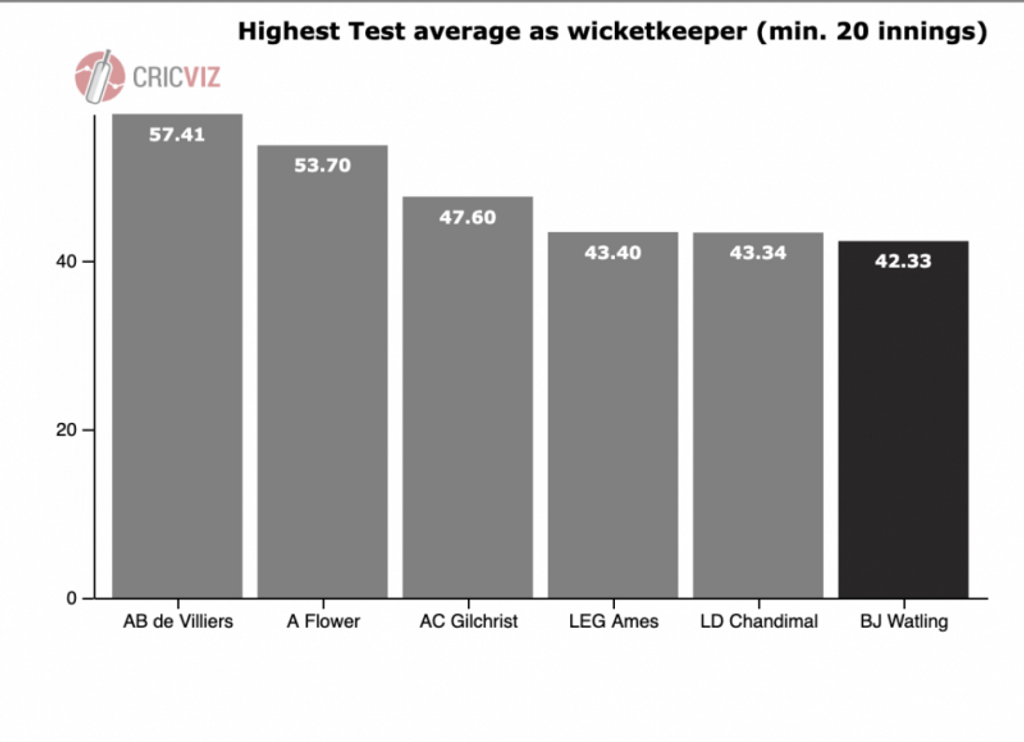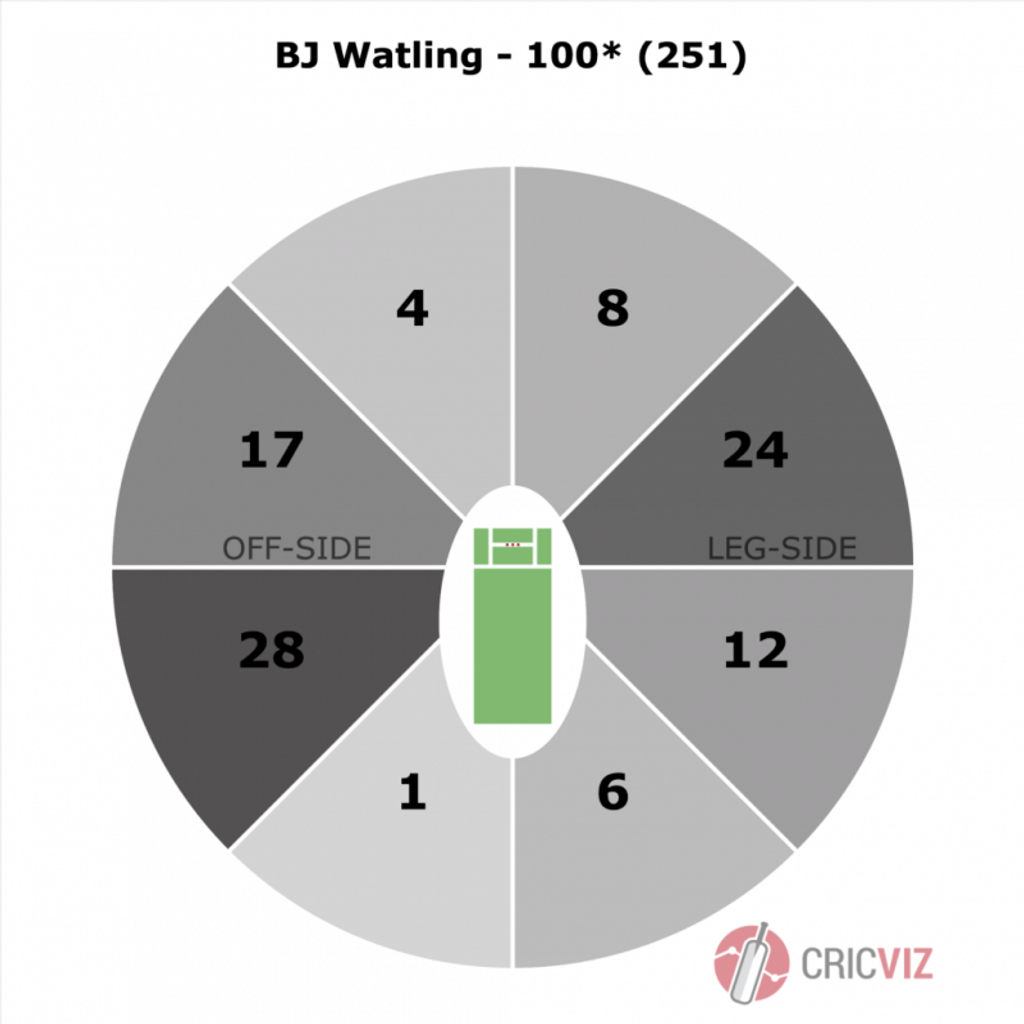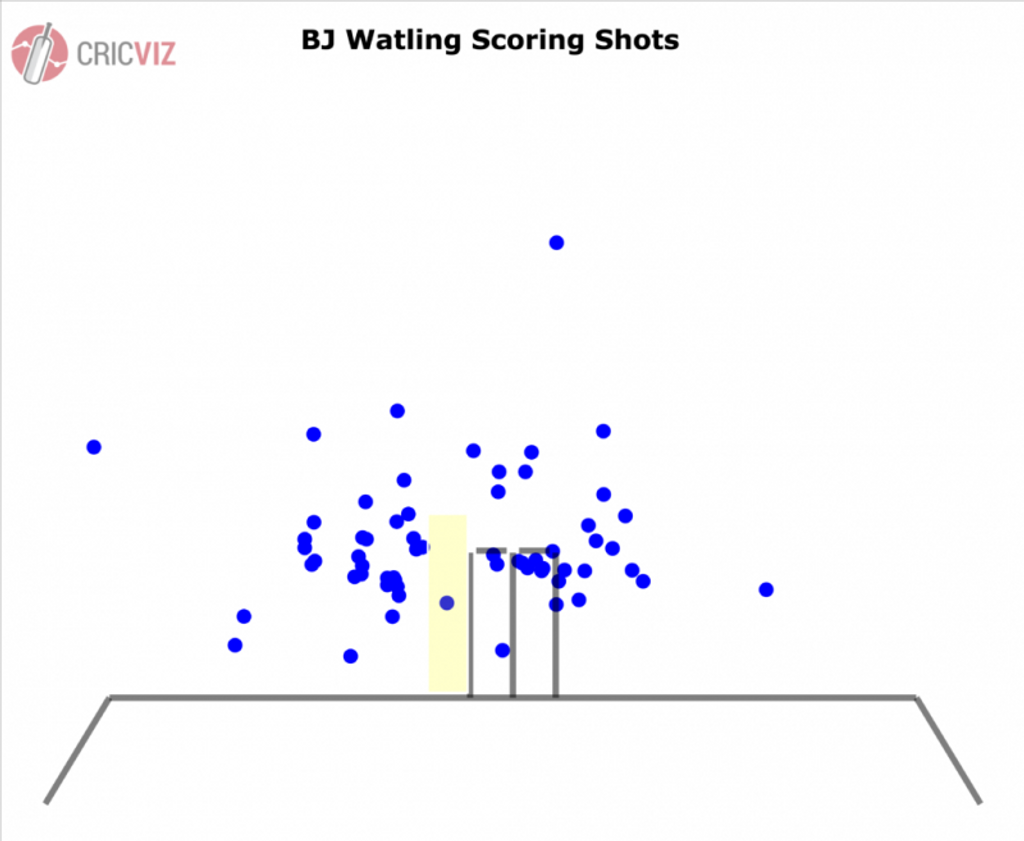
CricViz analyst Patrick Noone explains how BJ Watling, New Zealand’s gutsy ‘keeper-batsman, has developed a habit for playing vital knocks with his obdurate style, despite flying under the radar more often that not.
Also read: CricViz: England’s familiar foe embraces unfamiliar method to keep New Zealand in contest
The term ‘dark horse’ is a label that follows the New Zealand cricket team to every major tournament they compete in. No matter how many World Cup finals they reach, or how many world class players they produce, there remains the perception that the Black Caps are somehow punching above their weight, gatecrashers to the very top table of international cricket. There was even a time when, because of a sponsorship deal with The National Bank of New Zealand, the team wore the logo of a dark horse on their shirts – an inadvertently fitting nod to the oft-referenced moniker.
In truth, the idiom does players such as Kane Williamson, Ross Taylor and Trent Boult a disservice. ‘A usually little-known contender that makes an unexpectedly good showing’ is not an accurate description for some of the world’s finest cricketers, yet the depiction of New Zealand as plucky underdogs persists.
However, there was an irony on day three in Mount Maunganui that it was not one of New Zealand’s more heralded names who caused England the most damage. Williamson and Taylor had both been dealt with on day two, and it was left to BJ Watling and Colin de Grandhomme to grind out a 119-run partnership on a pitch that offered the visiting bowlers little in the way of assistance.

Watling is a player who often flies under the radar, even by New Zealand’s standards. In terms of the current Black Caps’ batsmen he is, well, a dark horse. And yet even for Watling, that reputation is arguably unfair. Only five men in Test history have a higher batting average than him with the gloves, and three of them are Adam Gilchrist, Andy Flower and AB de Villiers, all rightly recognised as some of the finest keeper-batsmen of all time.
Perhaps it’s because Watling has rarely been a regular in New Zealand’s more visible white-ball teams that he – unfairly – becomes something of an afterthought in the Test team. Watling has shown himself to be a batsman of serious quality over the last few years and today’s innings should only add to his legitimate claim to being the best wicketkeeper-batsman in the longest format.

When Watling brought up his century in 251 balls, he had all but eschewed playing down the ground. Only seven runs came in the V between mid-on and mid-off and four of them were from a single on-drive after Stuart Broad over-pitched. Watling instead accumulated his runs square of the wicket on both sides of the ground, punishing England whenever they were either too wide or too straight.
Watling’s technique is simple and unspectacular, but extremely effective. He knew exactly where his off-stump was throughout his innings, only offering one scoring shot from balls in the corridor of uncertainty on a fourth stump line. England’s seamers bowled 42% of their deliveries in that area, yet Watling had the discipline and the patience to simply keep them out and not look to score.

In all, Watling defended 38 per cent of the balls he faced, the highest percentage of any top-six batsman in the match. That speaks volumes about the way he went about his business, not only highlighting how obdurate he was at the crease, but also shining a light on England’s shortcomings in that regard. As the visitors try and rediscover the art of Test batting, Watling provided a compelling blueprint of what they should be aiming for; composed, ruthless accumulation.
In the death throes of the day’s play, England thought they finally had their man when Jofra Archer bowled an exceptional inswinging knuckle ball that struck the batsman on the front pad. Umpire Bruce Oxenford raised the finger but – almost inevitably – Watling had managed to get a thin inside edge and survived by the barest of margins. England would already have known that it was going to take a moment of magic to dislodge Watling and knowing that Archer had produced it, only for the wicket to be snatched away was the icing on top of a particularly demoralising cake.
This Test match has been a war of attrition almost from ball one. It therefore shouldn’t be a surprise that one of the game’s most patient and obdurate batsmen should play a key role. If England fail to win this match, they will look back on the middle order collapse on the second day that meant they could barely reach 350. Conversely, Watling showed England how to grind out a Test innings on a lifeless pitch. He might be forever destined to be the darkest of all New Zealand’s dark horses, but his innings today was a timely reminder that his good showings should be anything but unexpected.








